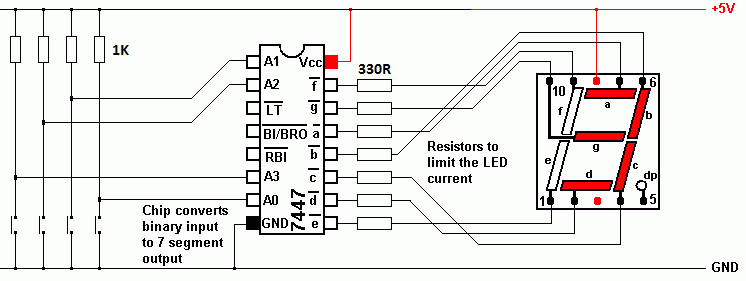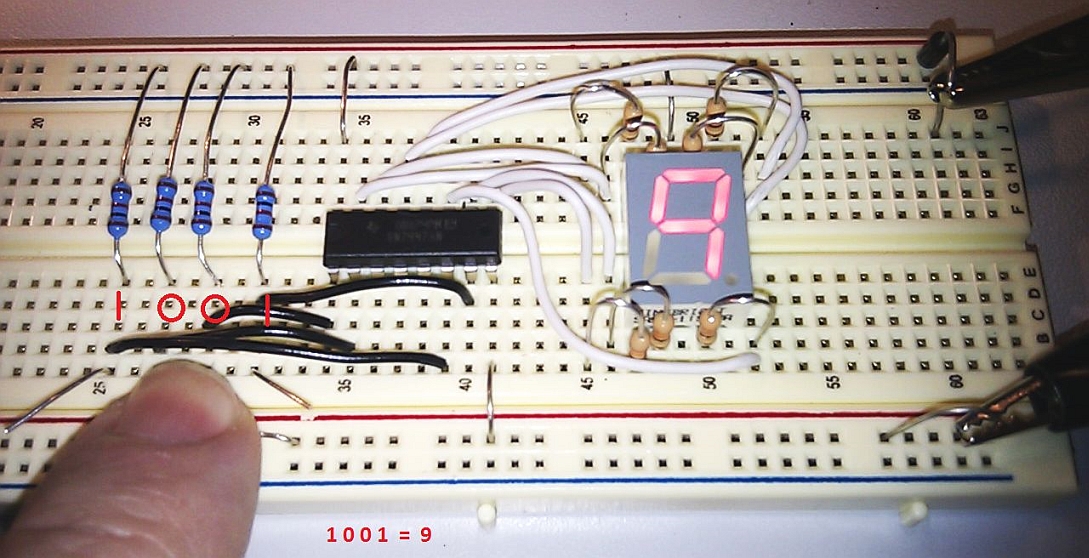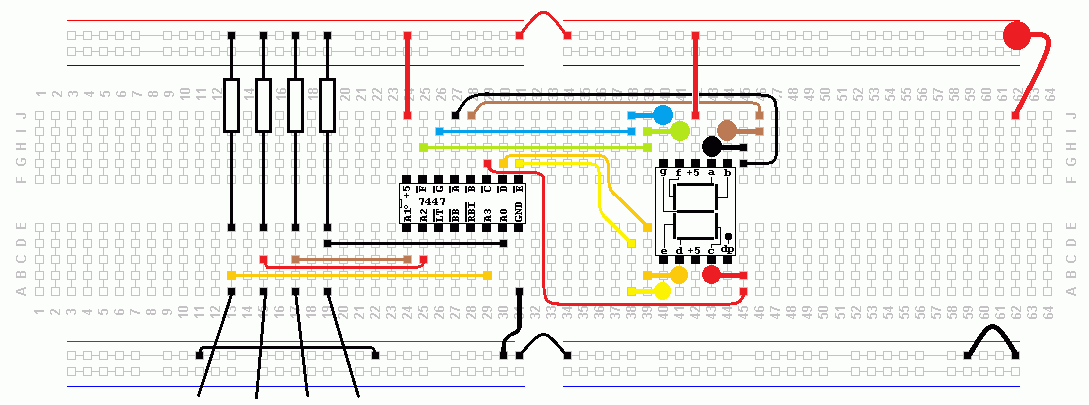

Binary Coded Decimal |
|
To gain access to revision questions, please sign up and log in.
a
This is used in digital clocks, calculators, cash registers and any device that only ever displays digits between 0 and 9.
A four bit binary number is used to represent each decimal digit.
A number like 32 is represented as two four-bit digits - The three is converted into 0011 and the two is converted into 0010.
In pure binary 32 would be represented as 100000.
The table below shows the bit patterns for each digit between 0 and 9.
| Decimal | Binary |
| 0 | 0000 |
| 1 | 0001 |
| 2 | 0010 |
| 3 | 0011 |
| 4 | 0100 |
| 5 | 0101 |
| 6 | 0110 |
| 7 | 0111 |
| 8 | 1000 |
| 9 | 1001 |
Here is a circuit that converts a BCD digit into seven signals that light the LEDs on a seven segment display. Here the binary input is 0011 (3 in decimal) and suitable segments are lit on the display. The lamp test LT pin lights all seven segments and the decimal point for test purposes. RBI and BI/BRO are used to blank unwanted zeros on multi digit displays so instead of seeing 000123 you just see 123. Google for the data sheet for full details.



It's possible to build a clock that outputs the time in Binary Coded Decimal. It uses a row of LEDs to show the hours (red) and the minutes (green).
![]()
reviseOmatic V3 Contacts, ©, Cookies, Data Protection and Disclaimers Hosted at linode.com, London